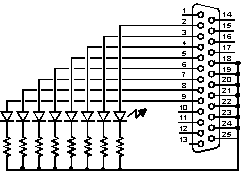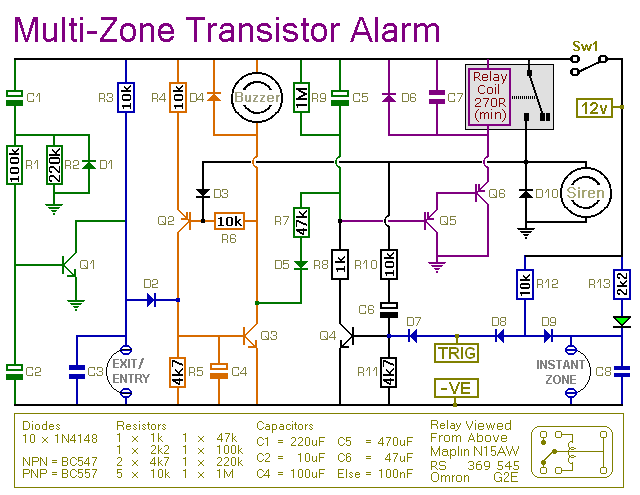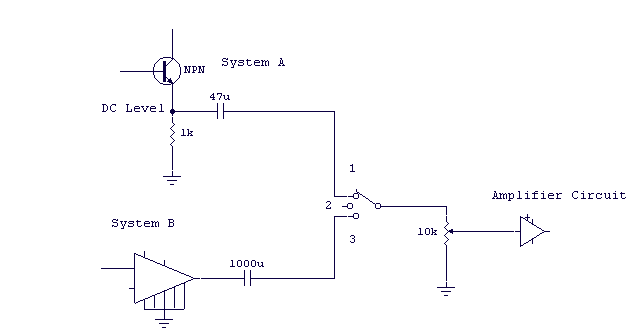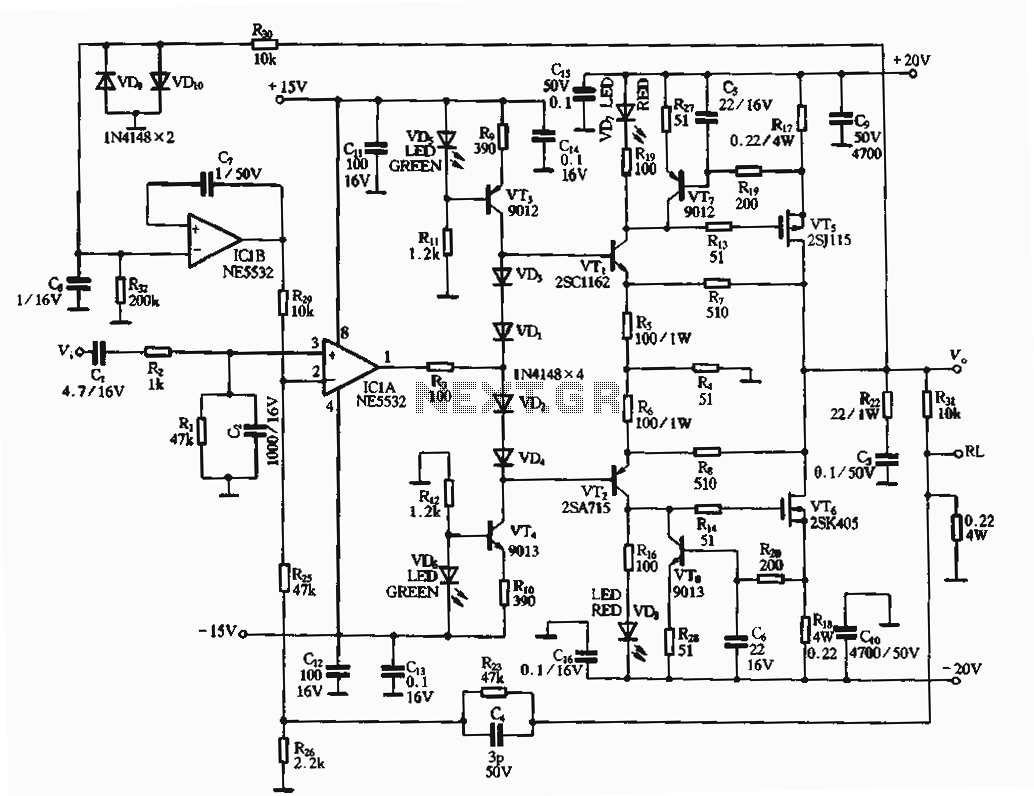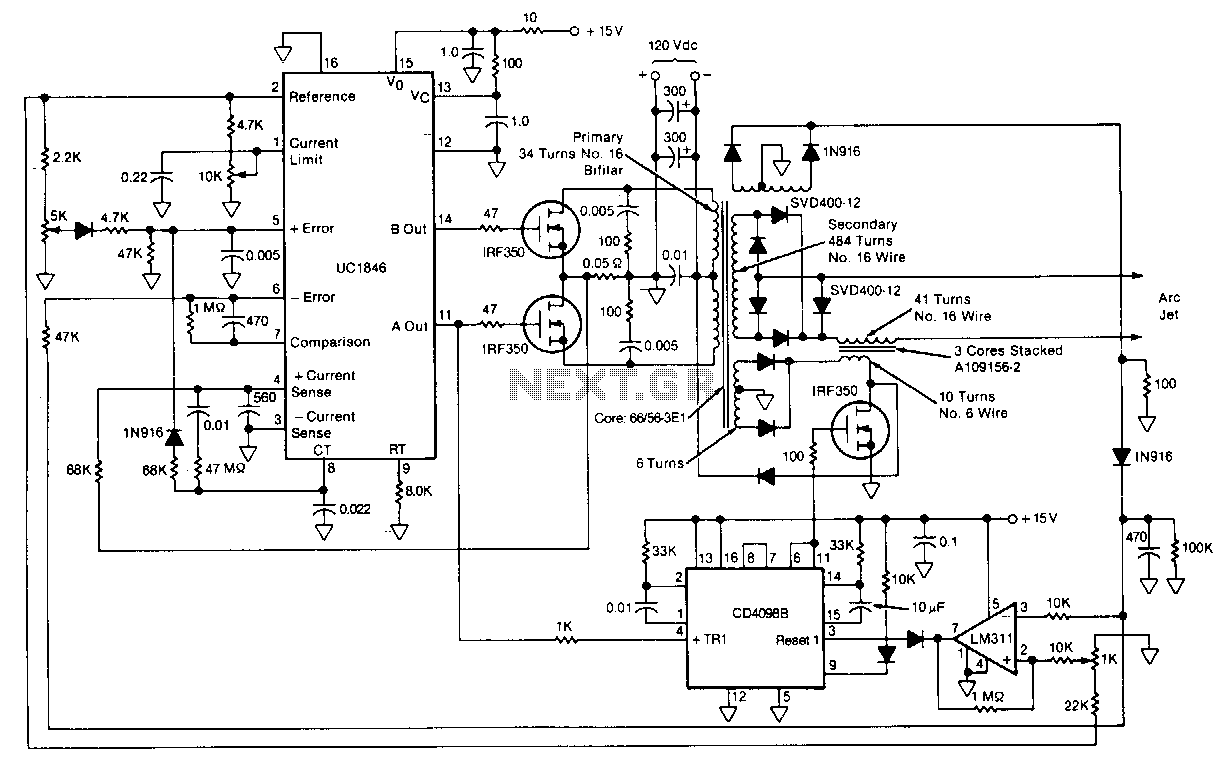
Ultrasonic Liquid Level Indicator Circuit Composed Of NE555
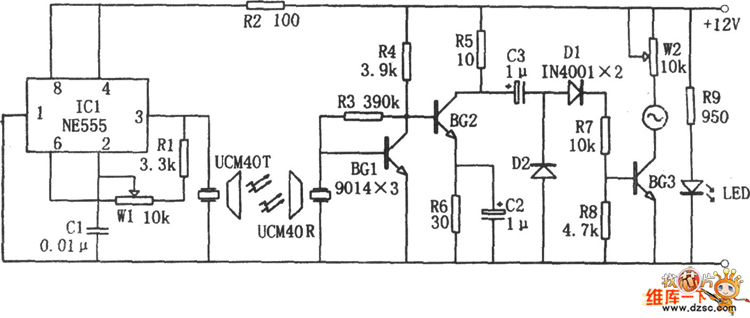
The image depicts an ultrasonic liquid level indicator circuit. This circuit consists of an ultrasonic transmitter circuit and a receiver circuit. The ultrasonic transmitter circuit includes a 555 timer, resistor R1, variable resistor W1, capacitor C1, and the ultrasonic transmitter head UCM40T. The ultrasonic receiver circuit is composed of the corresponding receiving head UCM40R and a cascade amplifier BG1.
The ultrasonic liquid level indicator operates by emitting high-frequency sound waves from the ultrasonic transmitter head (UCM40T). The 555 timer functions as an oscillator, generating a pulse signal that drives the transmitter. Resistor R1 and variable resistor W1 are used to adjust the frequency and duty cycle of the output signal, while capacitor C1 helps to stabilize the oscillation.
When the sound waves emitted by the transmitter encounter the liquid surface, they are reflected back towards the receiver head (UCM40R). The receiver detects these reflected sound waves and converts them into an electrical signal. The cascade amplifier (BG1) amplifies this signal for further processing. The time taken for the sound waves to return is proportional to the distance between the transmitter and the liquid surface, allowing for accurate measurement of the liquid level.
This circuit can be utilized in various applications, including water tanks, industrial processes, and other areas where liquid level monitoring is essential. The design allows for non-contact measurement, minimizing maintenance and ensuring reliability in diverse environments. Proper calibration of the components is critical to achieve optimal performance and accuracy in liquid level detection.The picture shows the ultrasonic liquid level indicator circuit. This circuit is made up of ultrasonic transmitter circuit and receiver circuit.The ultrasonic transmitter circuit is made up of 555, R1, W1, C1 and ultrasonic transmitter head UCM40T. The ultrasonic receiver circuit is made up of the corresponding receiving head UCM40R, cascade amplifier BG1..
🔗 External reference
The ultrasonic liquid level indicator operates by emitting high-frequency sound waves from the ultrasonic transmitter head (UCM40T). The 555 timer functions as an oscillator, generating a pulse signal that drives the transmitter. Resistor R1 and variable resistor W1 are used to adjust the frequency and duty cycle of the output signal, while capacitor C1 helps to stabilize the oscillation.
When the sound waves emitted by the transmitter encounter the liquid surface, they are reflected back towards the receiver head (UCM40R). The receiver detects these reflected sound waves and converts them into an electrical signal. The cascade amplifier (BG1) amplifies this signal for further processing. The time taken for the sound waves to return is proportional to the distance between the transmitter and the liquid surface, allowing for accurate measurement of the liquid level.
This circuit can be utilized in various applications, including water tanks, industrial processes, and other areas where liquid level monitoring is essential. The design allows for non-contact measurement, minimizing maintenance and ensuring reliability in diverse environments. Proper calibration of the components is critical to achieve optimal performance and accuracy in liquid level detection.The picture shows the ultrasonic liquid level indicator circuit. This circuit is made up of ultrasonic transmitter circuit and receiver circuit.The ultrasonic transmitter circuit is made up of 555, R1, W1, C1 and ultrasonic transmitter head UCM40T. The ultrasonic receiver circuit is made up of the corresponding receiving head UCM40R, cascade amplifier BG1..
🔗 External reference
